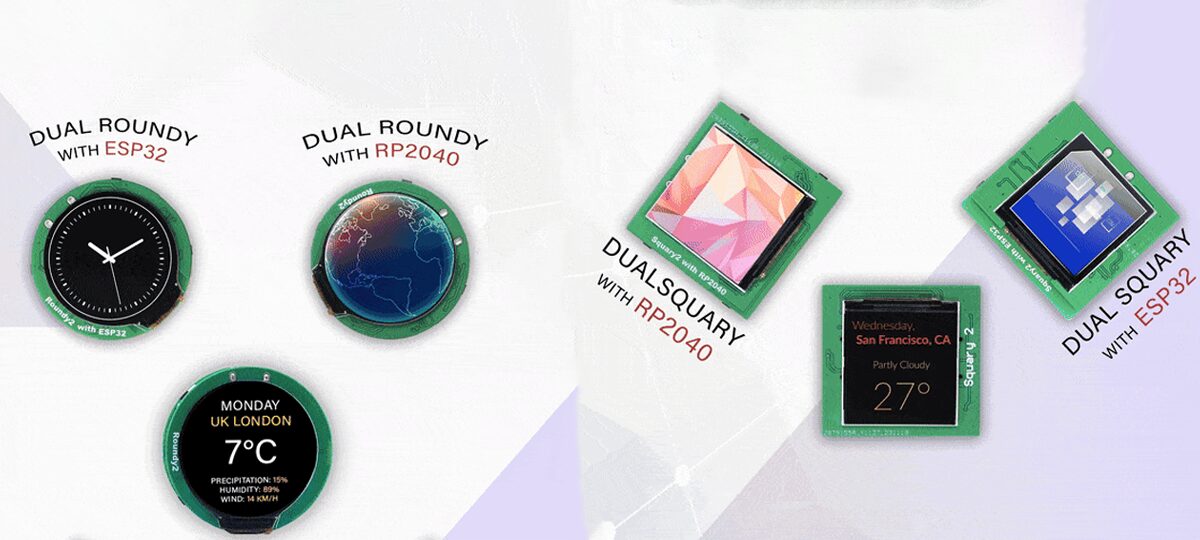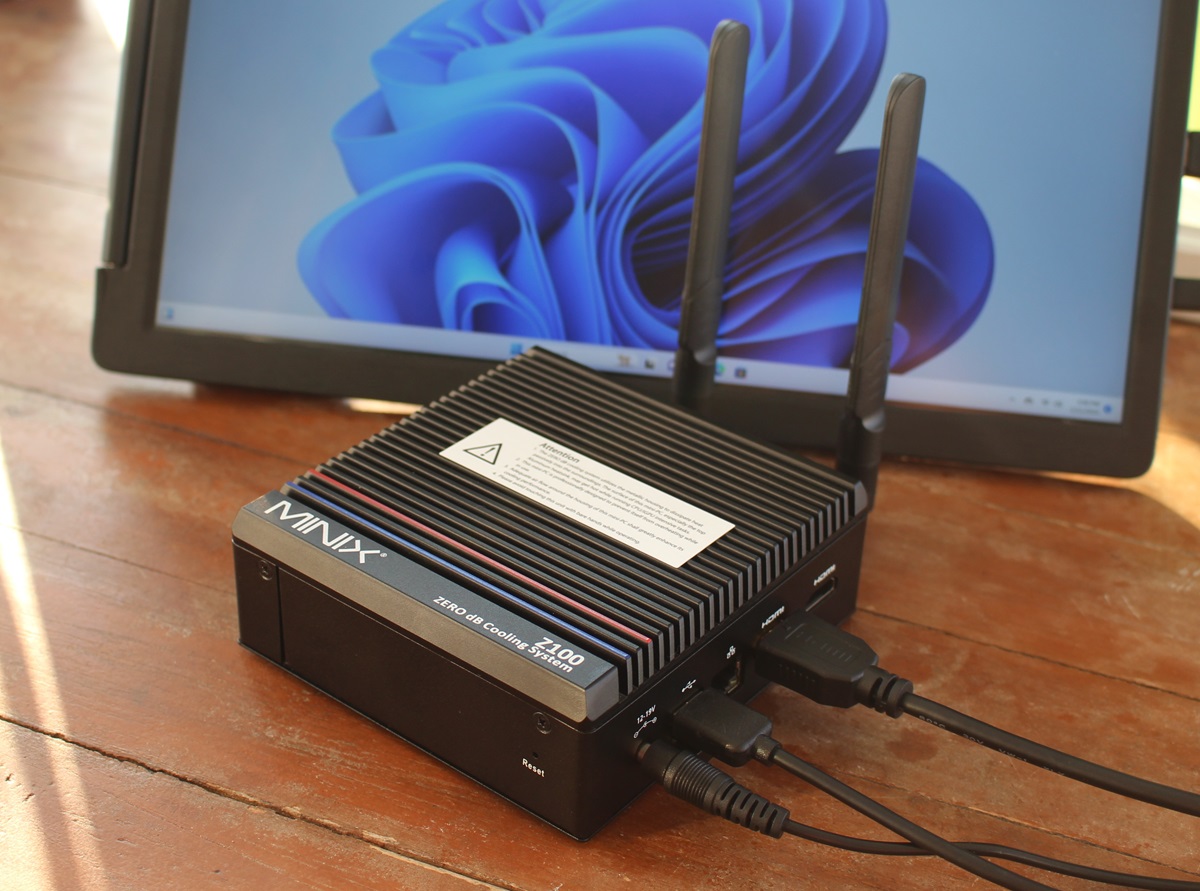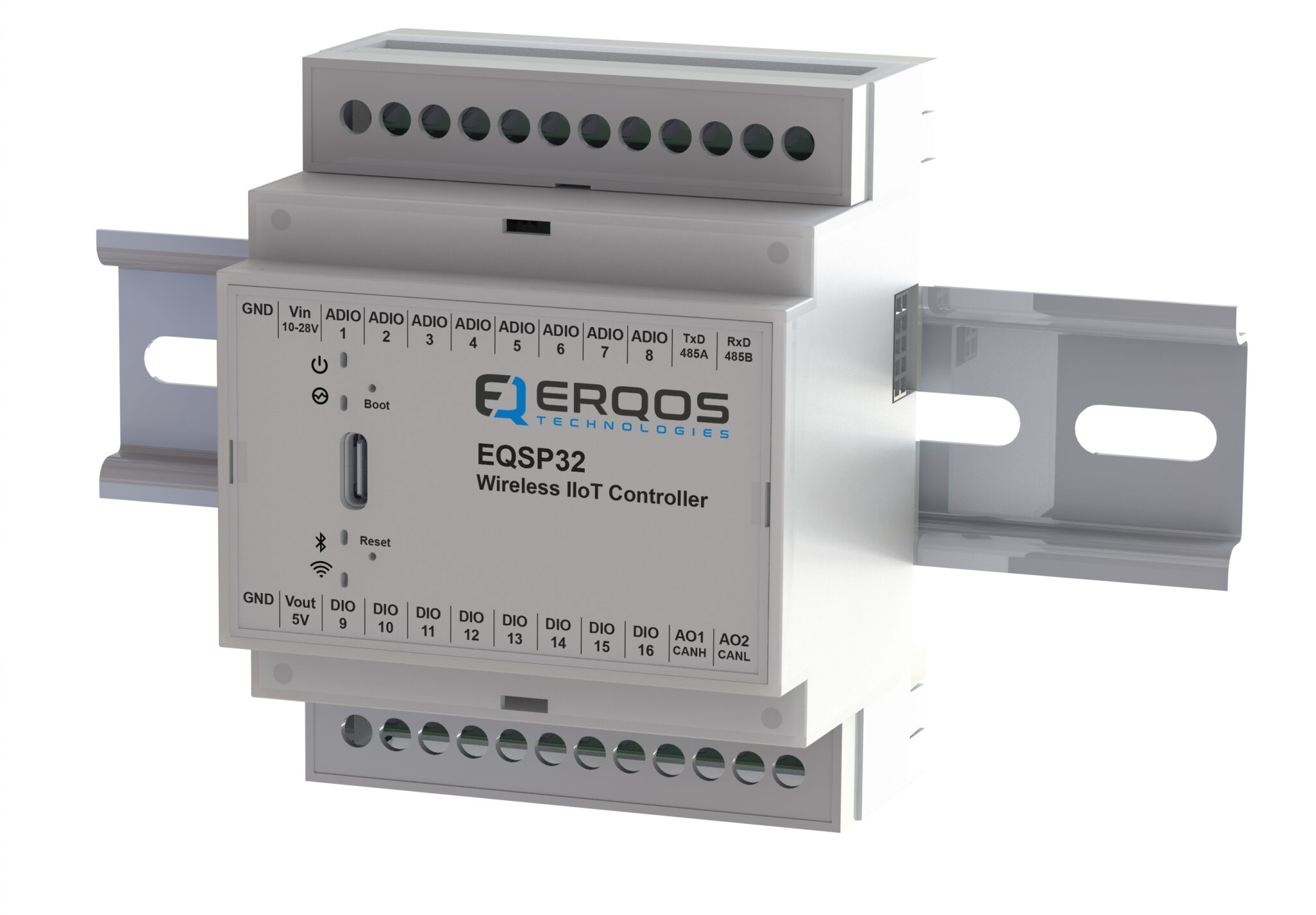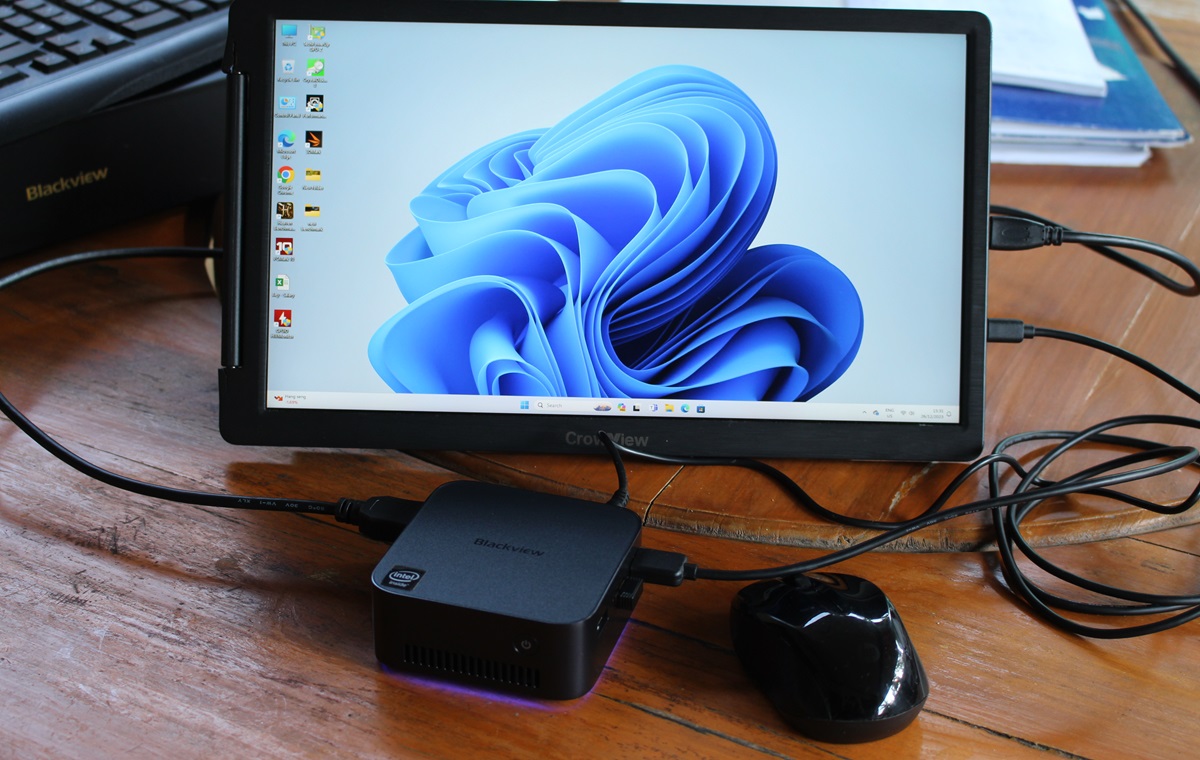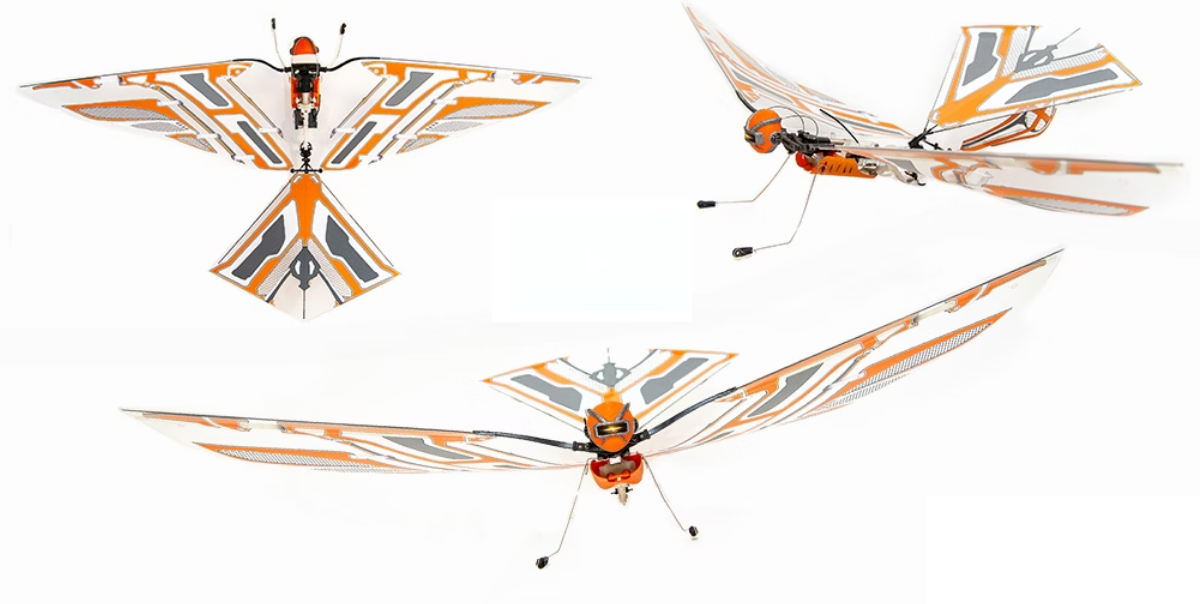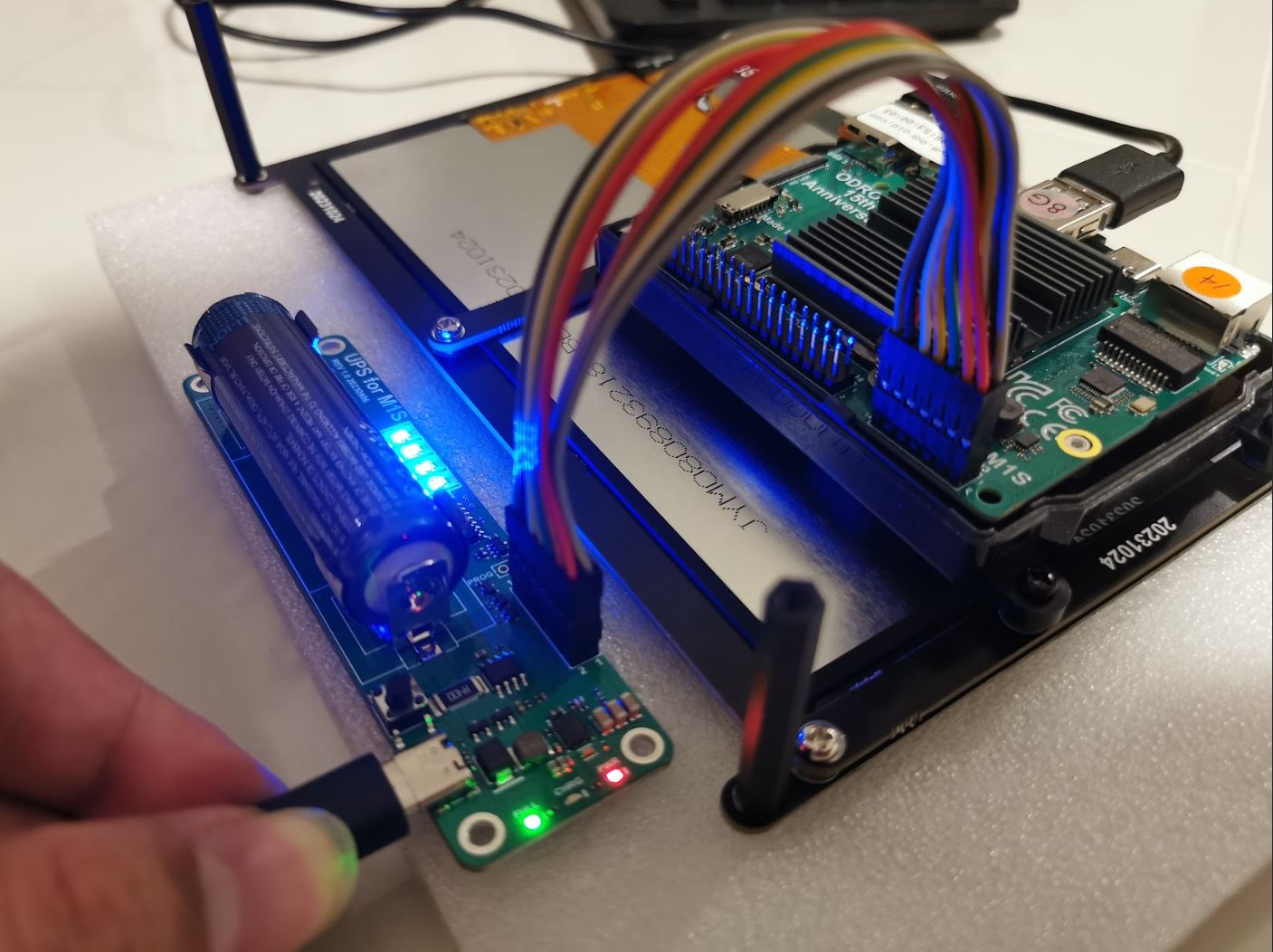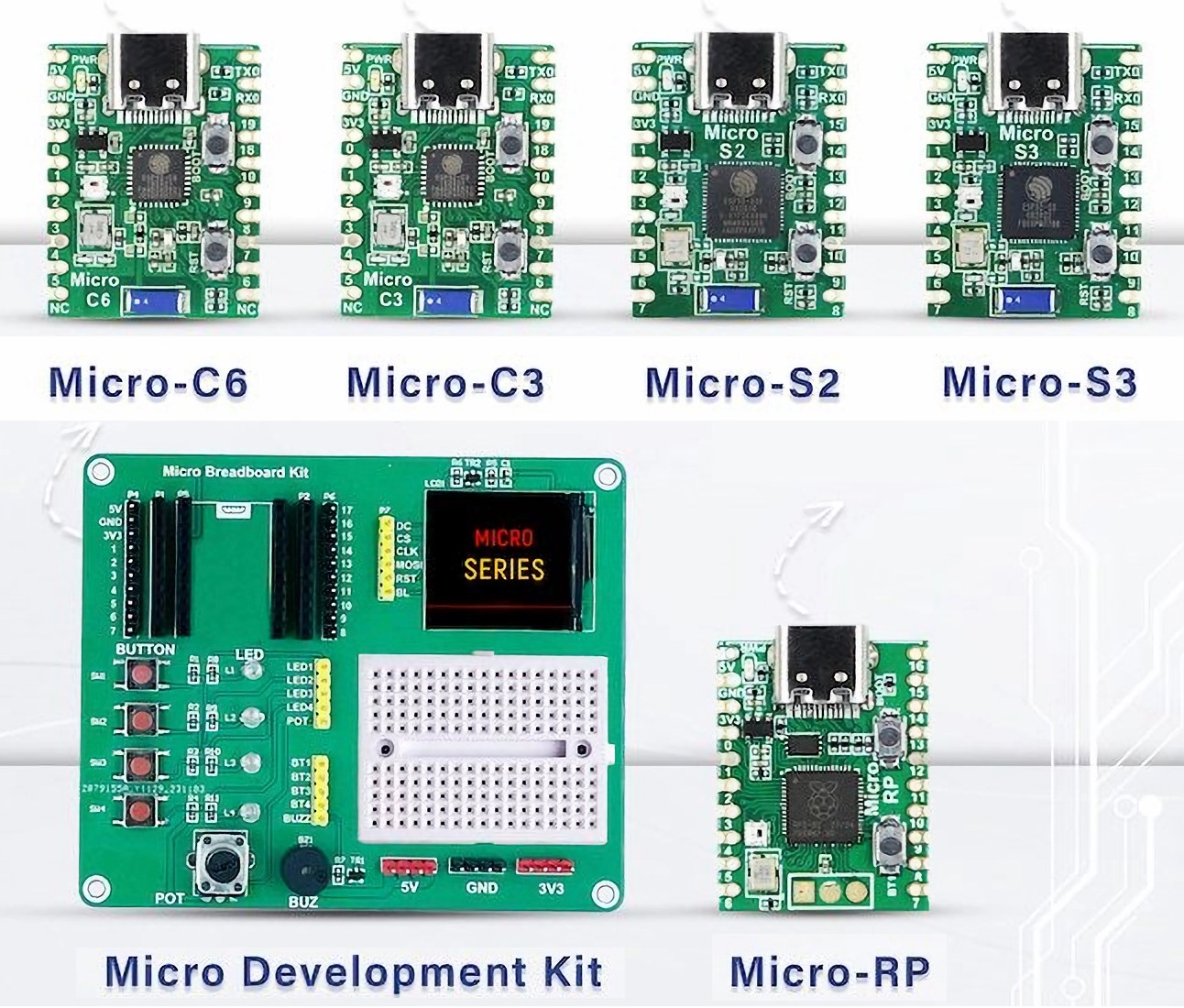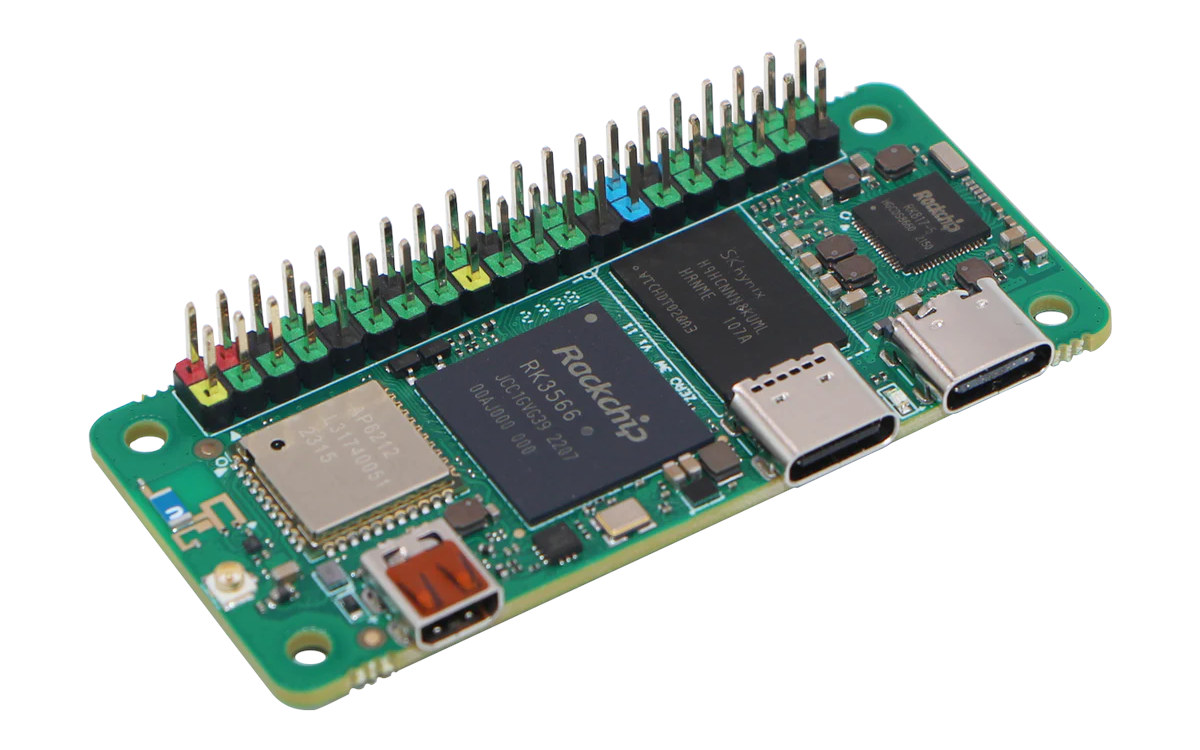SB-Components has launched Dual Roundy and Dual Squary display modules powered by Raspberry Pi RP2040 or ESP32-S3 microcontrollers. These compact modules feature a 6-DoF IMU, interchangeable displays, and multiple storage and connectivity options. The Dual Roundy is equipped with two 1.28-inch round displays, with a 240 x 240 resolution, and uses the GC9A01 display driver IC. In contrast, the Dual Squary features two 1.54-inch square displays with a 240 x 240 resolution but utilizes the ST7789 display driver. Both displays offer a choice between a Raspberry Pi RP2040 MCU and the ESP32-S3-WROOM-1 module catering to different needs in performance and wireless capabilities. We’ve previously explored other rounded displays like the MaTouch ESP32-S3, T-RGB ESP32-S3, and ESP32-S3 Round SPI TFT. We’ve also examined other products from SB Components such as the Cluster HAT, PiMecha, PiTalk 3G HAT, and Micro RP2040. Feel free to check these out for more interesting tech insights. […]
MINIX NEO Z100-0dB fanless N100 mini PC review – Part 1: Unboxing, teardown, and first boot
MINIX Z100-0dB (or MINIX NEO Z100-0dB) is a fanless mini PC powered by the popular Intel Processor N100 quad-core Alder Lake-N CPU with up to 32GB RAM, up to 512GB M.2 SSD, various USB 3.2/2.0 ports, a microSD card slot, two HDMI 2.0 ports, and a 2.5GbE RJ45 jack, as well as WiFi 6 and Bluetooth 5.2 wireless module. MINIX sent us a sample of the NEO Z100-0dB mini PC for review with 16GB DDR4-3200 RAM and a 512GB M.2 SSD preloaded with Windows 11 Pro. Since we’ve already listed the specifications in the announcement, today, we’ll go through an unboxing and a teardown before giving it a quick try booting Windows 11 Pro. We will then test the performance and features of the mini PC in detail with Windows 11 Pro and Ubuntu 22.04 (or 24.04) in the next parts of the review in several weeks. MINIX NEO […]
The EQSP32 is a no-code, no-solder Industrial Internet of Things Controller powered by a generative AI assistant (Crowdfunding)
The EQSP32 controller is a complete, end-to-end solution for IoT applications that recently launched on Kickstarter. It is a compact, wireless Industrial IoT controller based on the ESP32-S3 wireless SoC with a 250MHz dual-core processor, 512KB of RAM, and 8MB of flash memory. The product leverages artificial intelligence and code for automation projects can be generated automatically by the bundled generative AI programming assistant. The EQSP32 controller features 16 terminals that can be configured as analog or digital inputs, or as digital outputs. Switches, pushbuttons, keypads, LED strips, sensors, servos, potentiometers, etc., can be connected to these terminals. It is similar to the EdgeBox-Edge-100 we covered a while back but lacks an Ethernet port and uses less power overall. EQSP32 specifications: SoC: Espressif Systems ESP32-S3 dual-core Tensilica LX7 microcontroller @ 240 MHz, 512KB RAM Memory – 8MB flash Network Connectivity: Bluetooth, WiFi USB – USB-C programming port I/O: 16 multipurpose […]
Review of Blackview MP80 (Processor N97) mini PC with Windows 11 Pro
Blackview MP80 is a tiny pocket-sized mini PC powered by either an Intel Alder Lake-N Processor N95 or Processor N97 CPU with 16GB LPDDR5 RAM and a 512GB M.2 SSD preloaded with Windows 11 Pro. We’ve already reviewed the Blackview MP80 (N95) mini PC a few months ago, but the company has now sent us the Processor N97 model for review. Both models look identical with the same ports including three HDMI 2.0 video outputs, three USB ports, and two gigabit Ethernet ports, plus a Wi-Fi 5 and Bluetooth 4.2 wireless module. The mini PCs are also actively cooled, and the only obvious differences are the processor (Intel N95 vs N97) and the color of the enclosure. We usually do a three-part review with the first one listing the specs, and going through an unboxing and a teardown, but for the Blackview MP80 (N97) review we will do those and […]
This New X-Fly drone mimics a bird’s flight (Crowdfunding)
Aeronautical engineer Edwin Van Ruymbeke has introduced X-Fly, a drone that emulates the flight pattern of a bird. The drone communicates via Bluetooth using the STM32WB15CC microcontroller, has a range of 100 meters, and can fly for 8-12 minutes with a swappable battery system. The company mentions that they have collaborated with the French military to develop the flapping wings mechanism, which incorporates gyroscopes and g-sensors, ensuring a stable flight. The drone can be controlled with a smartphone app or an attachable optical joystick and It’s also durable against crashes, has a quick-swap battery system, and improved wing mechanics for longer flights. We’ve previously covered drones such as the Qualcomm Flight RB5-based drone Kudrone Nano Drone and some drone kits like Qualcomm Flight Pro. Feel free to explore these if you’re interested. Key Features and Specification of X-Fly Drone: Control Board – The PCB features an STM32WB15CC Bluetooth microcontroller, motor […]
ODROID-M1S review – Part 1: Ubuntu 20.04, Vu8S touchscreen display, UPS Kit, and WiFi Module 5BK
Hardkernel ODROID-M1S single board board was recently launched to celebrate the company’s 15th anniversary. While the ODROID-M1 board was introduced with the Rockchip RK3568 SoC last year, the new ODROID-M1S board is smaller and cheaper starting at just $49 and comes with a Rockchip RK3566 SoC. Hardkernel sent us a sample of the ODROID-M1S board for review with 8GB of memory and 64GB of storage as well as accessories. Let’s unpack the box before trying it out with Ubuntu 20.04 Desktop and testing each accessory. ODROID-M1S unboxing with ODROID-Vu8S display, UPS kit, and WiFi dongle The review package we received from Hardkernel included the ORDROID-M1S SBC in its plastic enclosure, the VU8S 8-inch touchscreen display, a UPS board, and a dual-band WiFi 5 USB dongle. The UPS module comes without a battery, so we had to find an 18650 battery to use it. As we’ll see further below, the UPS […]
Microflex MCUs – Tiny USB development boards based on ESP32-S3, ESP32-S2, ESP32-C3, ESP32-C6, or Raspberry Pi RP2040 (Crowdfunding)
SB Components is back with yet another crowdfunding campaign this time with the Microflex MCUs USB development boards all with the same tiny form factor and offered with a choice of five microcontrollers namely Raspberry Pi RP2040, ESP32-S3, ESP32-S2, ESP32-C3, or ESP32-C6. Microflex MCUs share the same layout with a USB-C port for power and programming, a built-in RGB LED, two buttons for Boot and Reset/User, and two rows of 10-pin with through and castellated holes to access the GPIOs and power signals such as 5V, 3.3V, and GND. But they differ in terms of the processor used, wireless features, and available I/Os as shown in the table below which sadly lacks any information about the flash and eventual PSRAM… The illustration below includes some more details for the Micro-C6 with the main components, ports, and a pinout diagram. Programming the firmware for the ESP32-series can be done through the […]
Radxa Zero 3W SBC – Rockchip RK3566 SoC, 8GB RAM, WiFi 6 in Raspberry Pi Zero 2 W form factor
More Raspberry Pi Zero 2 W lookalikes are coming to market, as after the Allwinner H618-based Orange Pi Zero 2W, the Radxa Zero 3W has now been introduced with a 1.6 GHz Rockchip RK3566 processor and up to 8GB RAM, plus WiFi 6 and Bluetooth 5.4 connectivity, which makes it one of the most powerful Arm Linux SBCs in the compact Raspberry Pi Zero form factor. The board also comes with an optional eMMC flash with up to 64GB capacity, a microSD card, a micro HDMI port, two USB Type-C ports, a MIPI CSI camera connector, and of course, the usual 40-pin Raspberry Pi GPIO header. Radxa Zero 3W specifications: SoC – Rockchip RK3566 CPU – Quad-core Arm Cortex-A55 processor @ 1.6 GHz (Note the RK3566 is usually clocked at up to 1.8 GHz but may have been underclocked here due to heat issues at the higher frequency as the […]


